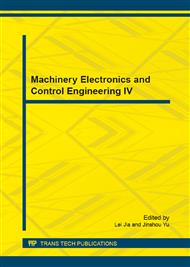p.320
p.324
p.329
p.333
p.341
p.345
p.350
p.355
p.360
Speed Sensorless Control with ANN-MRAS Based on Modified ACO for Induction Motor Drives
Abstract:
In the speed sensorless induction motor drives system, Model Reference Adaptive System (MRAS) is the most common strategy. It suffers from parameter sensitivity and flux pure integration problems which may cause DC drift. As a result, it leads to the deterioration of estimation at low speed. To overcome these problems, an Artificial Neural Networks (ANN) is presented as a Rotor Flux (RF) observer to replace the conventional voltage model used in RF-MRAS speed observer. Simultaneously, in order to solve the trap of local minimum value of algorithm, and enhance the ANN convergence speed, we used the modified Ant Colony Optimization (ACO) to optimize the weights and thresholds value of neural networks. The results of the simulation show that, by this method, the speed of motor can be identified accurately in different situations, and the result is reliable.
Info:
Periodical:
Pages:
341-344
Citation:
Online since:
December 2014
Authors:
Price:
Сopyright:
© 2015 Trans Tech Publications Ltd. All Rights Reserved
Share:
Citation:


